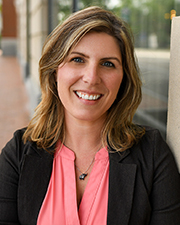2025 Fall Preview: Aubrey Bennett, Market Square Architects

Senior Project Architect
Market Square Architects
What trends or shifts do you see shaping your industry this fall and into 2026? I’m seeing Passive House continue to influence multifamily development in Massachusetts and across the region. It’s driving earlier collaboration between architects, engineers, and builders to balance energy goals with project budgets. At the same time, many Massachusetts developers are looking to nearby states like southern New Hampshire, Rhode Island, and Connecticut for projects that can move forward with fewer code-related hurdles. It’s reshaping how and where housing gets built across New England.
What’s one major project, initiative, or innovation your firm is focused on in the months ahead? I’m focused on Sunrise Senior Living in Chestnut Hill, Mass., a five-story, 93-unit assisted living and memory care community that’s on track to be one of the first of its kind to meet Passive House standards. Alongside this, I’m guiding clients through evolving energy codes with cost-conscious strategies that enhance building performance. It’s exciting to see smarter products and construction methods transforming how traditional systems meet today’s higher efficiency goals.
What challenges or opportunities do you anticipate for your clients as the market heads into Q4? Most of my clients are focused on the same challenge: getting projects to pencil as costs rise and requirements grow more complex. The opportunity comes from making smart, early decisions that protect budgets without cutting corners. When architects and developers work closely from the start, we can find design solutions that keep projects viable, meet code, and bring much-needed housing to market faster.
What are you most excited about for the future of your sector? I’m encouraged by the steady multifamily growth happening across Massachusetts, New Hampshire, and Maine. Projects are starting to fill the missing-middle gap between luxury and affordable housing. That kind of development supports smart land use, strong communities, and real opportunities for developers who want to stay close to Boston but build where the numbers still make sense. It’s a healthy direction for the region and for housing overall.
Check out the New England Real Estate Journal's 2025 Fall Preview Spotlight
Explore our Fall Preview Spotlight, featuring exclusive Q&As with leading commercial real estate professionals and in-depth byline articles on today’s most relevant market topics. Gain insight into the trends, challenges, and opportunities shaping New England’s commercial real estate landscape this fall.


30 years on South Coast Rail: A journey to connect Southeastern Mass. with commuter rail - by Rick Carey

Shallow-bay wins on 495/128: A renewal-driven market with a thin pipeline - by Nate Nickerson

How long should I hold a property for it to qualify as an investment property in connection with a 1031 tax-deferred exchange? - by Brendan Greene and Mark McCue











.png)